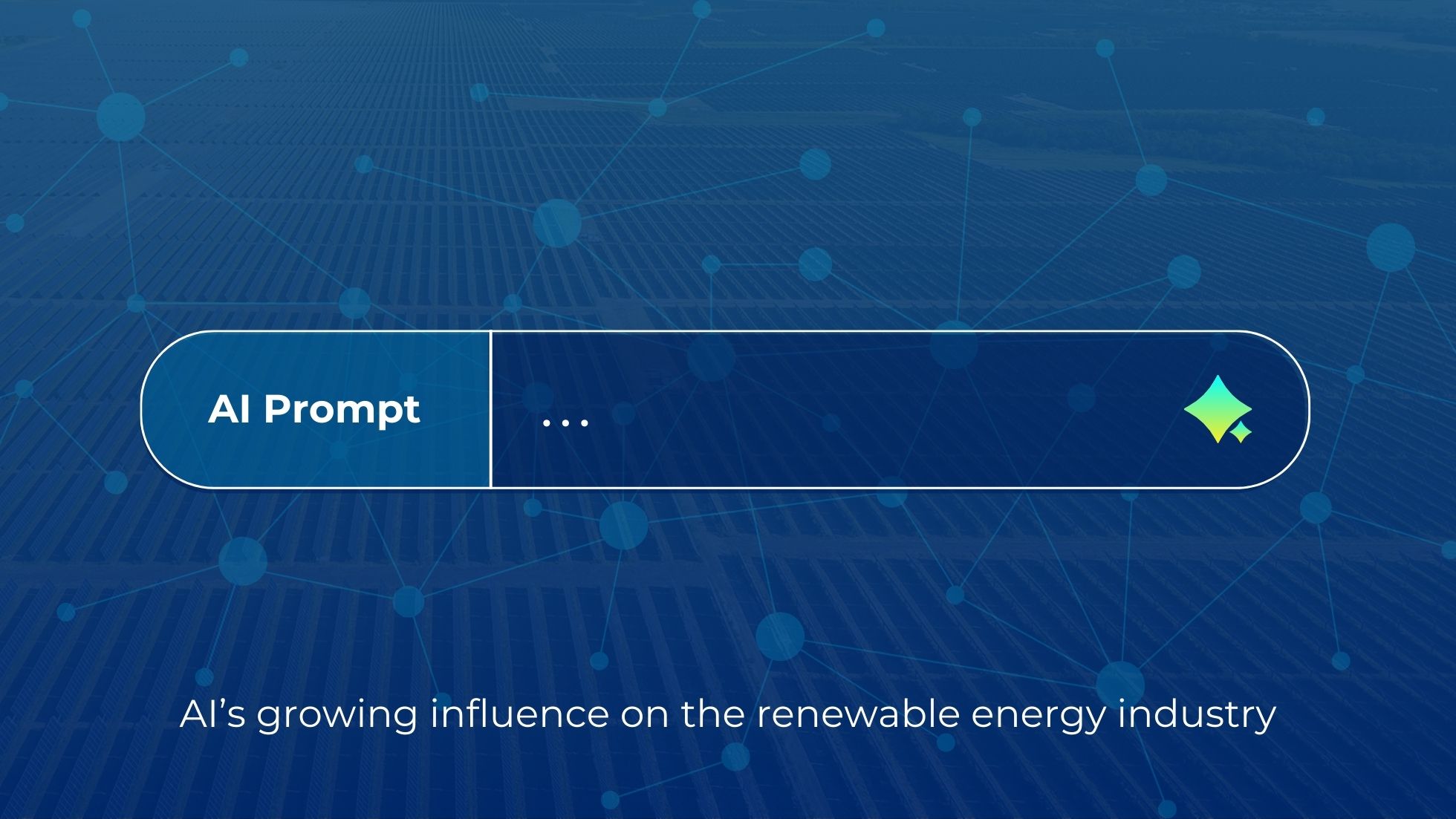Working with EPCs — End-to-End Renewable Energy Engineering Learn More
AI’s growing influence on the renewable energy industry

Artificial intelligence is having a far-reaching impact on virtually every industry segment, and the clean energy sector is no exception. A recent estimate suggests that AI already serves more than 50 different functions in the energy system, from grid maintenance to load forecasting.
It’s not surprising that the energy industry is harnessing AI to improve efficiency and accelerate innovation. Smart meters, powered by AI technology, can send several thousand times more data points to utilities than their analog predecessors. The potential to streamline processes and boost energy management efficiency is enormous.
Enverus, a company with an energy-dedicated SaaS platform featuring AI tools that are now being used in the solar energy, summarizes the key ways AI can transform renewable energy production and consumption:
Managing supply and flow
Electricity companies and grid operators can use AI and machine learning to forecast energy generation, schedule maintenance and manage power flows. The increasing adoption of smart meters is generating data that AI algorithms can use to predict demand and network capacity, shifting the load to optimize consumption from solar and battery systems.
Predicting power output
Wind power output can be forecast using weather models and information on the location of turbines. However, deviations in wind flow can lead to output levels that are higher or lower than expected, which can push up operational costs. To address this issue, in 2019 Google and its AI subsidiary DeepMind developed a neural network to increase the accuracy of forecasts for its 700 MW renewable fleet. Based on historical data, the network developed a model to predict future output up to 36 hours in advance with much greater accuracy than was previously possible.
Analyzing risk and opportunity
Using image recognition, a form of AI, to validate data, investors and developers can identify the possible risks and opportunities of a potential project. Algorithms can then create preliminary cash-flow models that demonstrate to developers whether a project is a good investment to undertake. By automating the project modeling process, AI tools can rapidly identify profitable projects and free up teams to focus on completing deals efficiently.
Delivering greater cost efficiencies
AI programs can combine machine learning capabilities with weather models, historical datasets, real-time information from local weather stations, satellite imagery, cameras and sensor networks to enhance the forecasting of supply and demand. This results in more efficient management of conventional generators and reduces the cost of starting and shutting down units, adapting power plant output to changing weather conditions. In addition, more accurate forecasting of renewable energy output enables power generators and energy traders to bid in the wholesale and balancing markets.
Solving intermittency issues
Among AI’s most promising applications in the renewable energy sector is addressing the intermittency of wind and solar power, which has long been a barrier to widespread adoption. AI-powered predictive maintenance and grid management address this issue by helping to optimize the charge and discharge cycles of battery storage systems, making them more efficient.
AI is creating the demand for more energy
While the problem-solving capabilities of AI technology are undeniable, it has a staggering appetite for electricity. Goldman Sachs Research estimates that by 2030, data center power demand will increase by 160%, with AI playing a major role in this rise. This will require the design, engineering and construction of new solar, wind and energy storage facilities, and Blymyer is expecting a huge increase in the demand for our multidisciplinary design and engineering services moving forward. Our team is closely monitoring and analyzing the integration of AI technology into the renewable energy industry and will adapt our processes to the changing dynamics we see unfolding.